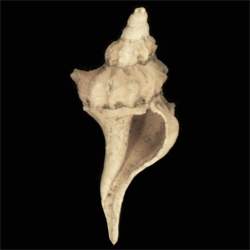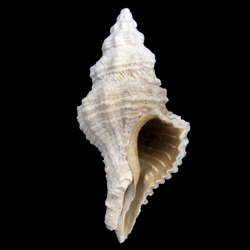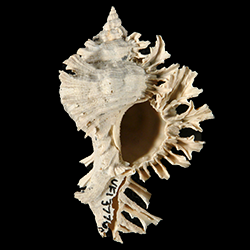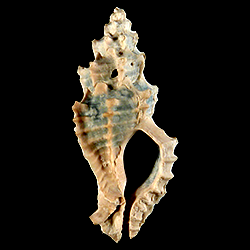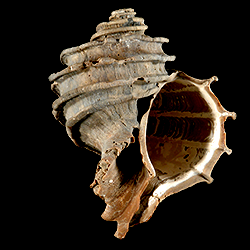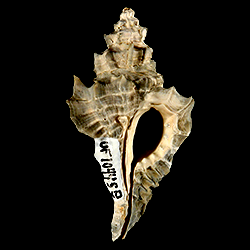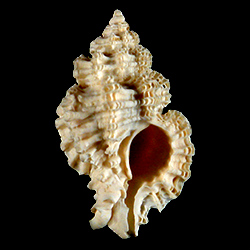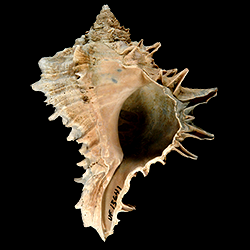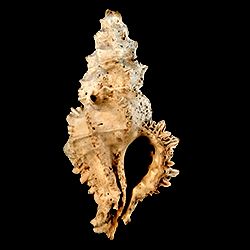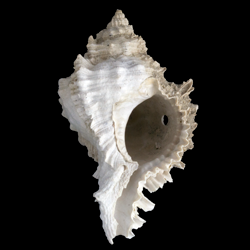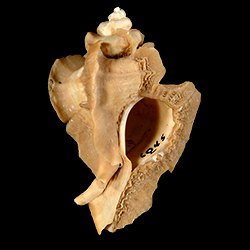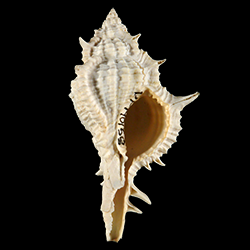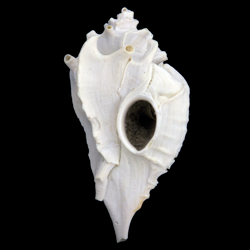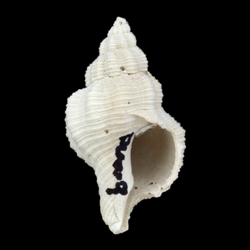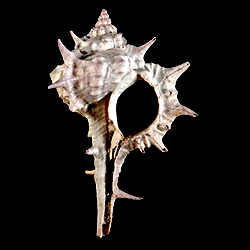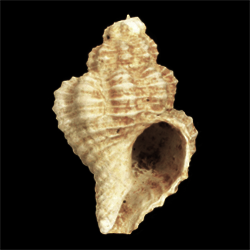
Muricidae
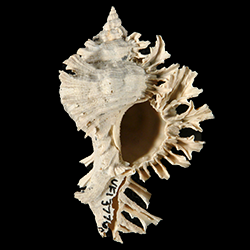
- Phylum: Mollusca
- Class: Gastropoda
- Order: Neogastropoda
- Family: Muricidae
Overview
Common name: Rock shells and murex shells
Key morphological features: The Muricidae are small to large-sized gastropods. Most species in the Muricidae have fusiform shells, but the family also includes species with limpet-shaped and elongate forms. The siphonal canals range from short to long and may be open or closed. Exterior sculpture is highly variable and may be quite flamboyant in some species, ranging from mostly smooth, to axial ribbing combined with spiral cords, to heavily ornamented varices with spines, knobs, or frill-shaped structures. The aperture is typically open and ovate in outline. The labrum profile is straight in most species and the interior surface may be smooth, or may have fine dentition or mirror the pattern of external ornamentation. Sources: Davies, A.M. 1971. Tertiary Faunas Vol. 1, second edition. New York: American Elsevier Publishing Company, Inc. 571 pp.; Tunnell Jr., J.W., Andrews, J., Barrera, N.C., Moretzsohn, F. 2010. Encyclopedia of Texas Seashells. College Station: Texas A&M University Press. 512 pp.
Geological range: Upper Cretaceous to Recent (Davies, 1971).
Geographic distribution: A distributional map for modern Muricidae may be accessed from OBIS. A distributional map for ancient Muricidae may be accessed from the Paleobiology Database.
Diversity: There are 1727 recognized living species of Muricidae and 176 genera (WoRMS database, unvetted). The Paleobiology Database recognizes 128 fossil genera and 1173 fossil species of Muricidae (unvetted).
Paleoecology: The extant Muricidae are marine predatory gastropods that prey on a range of prey types, including other species of mollusks, barnacles, polychaete worms, and corals. Most species are capable of drilling holes in shelled prey, similar to members of the Naticidae. Most species of Muricidae inhabit hard substrates such as rocks or reefs, although a few species live on soft substrates. They can be found in shallow tropical to polar waters worldwide at depths ranging from intertidal to thousands of meters. Sources: Tunnell et al. (2010); Barco et al. (2010)
Phylogenetic status: Monophyletic. The molecular phylogenetic analysis of Barco et al. (2010) supports the monophyly of Family Muricidae.
